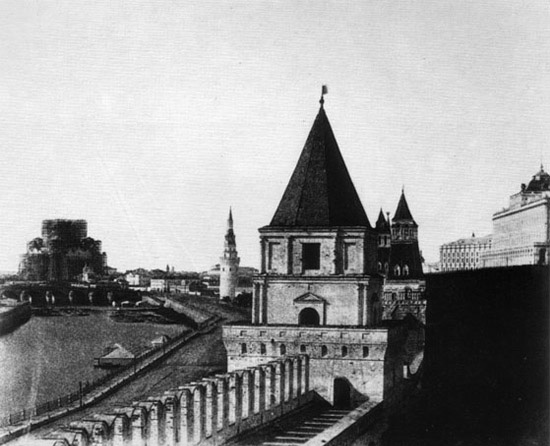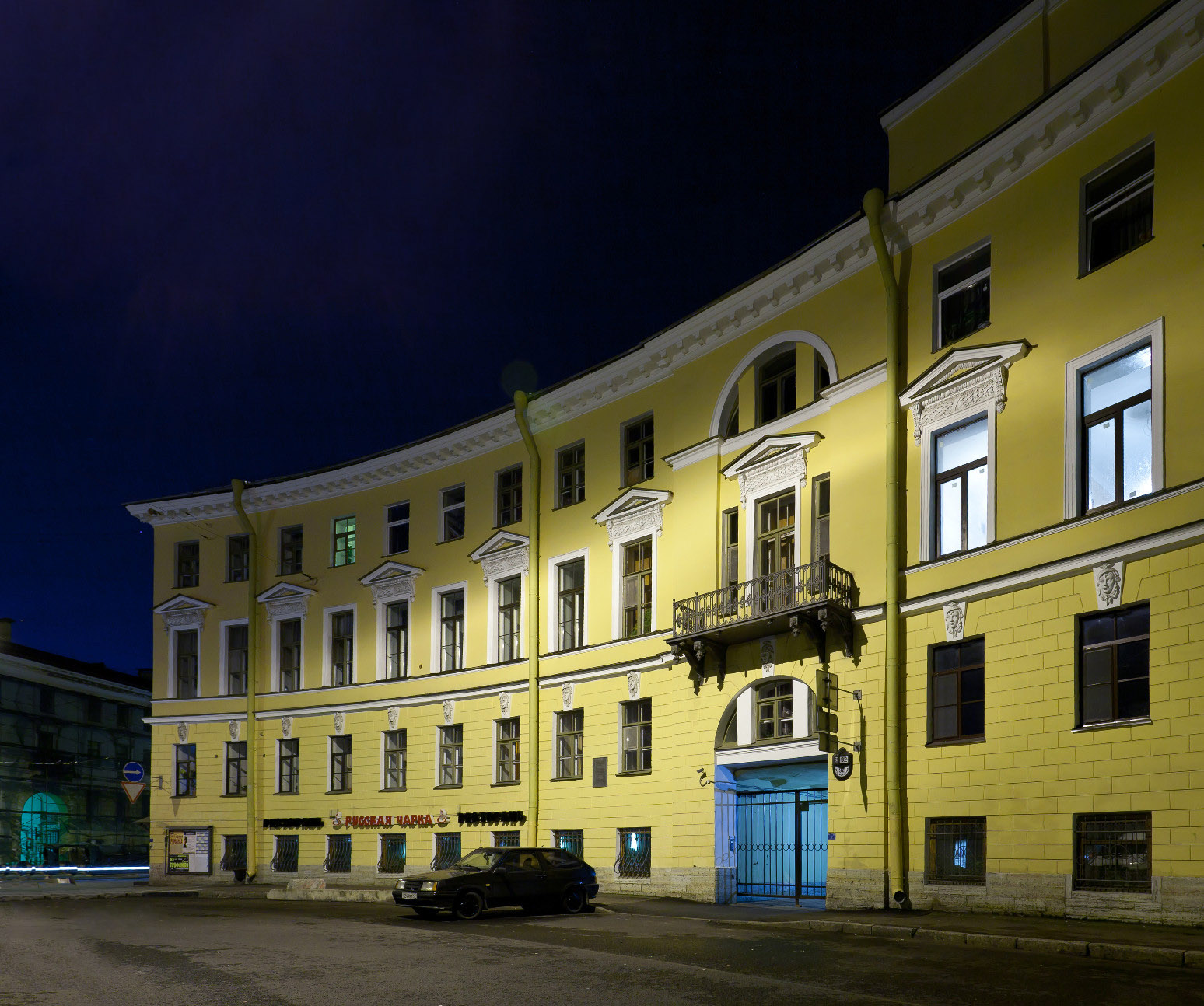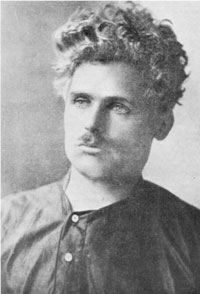|
Renovationism
Renovationism (russian: обновленчество; from 'renovation, renewal') – also called Renovated Church (обновленческая церковь) or by metonymy the Living Church (Живая Церковь) –, officially named Orthodox Russian Church (Православная Российская Церковь), and later Orthodox Church in USSR (Православная Церковь в СССР), was a religious movement that schismed from the Russian Orthodox Church in 1922. The movement ceased to exist in late 1940s. This movement originally begun as a grassroots movement among the Russian Orthodox clergy for the reformation of the Church, but was quickly influenced by the support of the Soviet secret services ( CheKa, then GPU, NKVD), which had hoped to split and weaken the Russian Church by instigating schismatic movements within it. Robert Service, ''A History of Modern Russia, from Nicholas II to Putin'' p 135 The beginning of actual schism is usual ... [...More Info...] [...Related Items...] OR: [Wikipedia] [Google] [Baidu] |
Russian Orthodox Church
, native_name_lang = ru , image = Moscow July 2011-7a.jpg , imagewidth = , alt = , caption = Cathedral of Christ the Saviour in Moscow, Russia , abbreviation = ROC , type = , main_classification = Eastern Orthodox , orientation = Russian Orthodoxy , scripture = Elizabeth Bible ( Church Slavonic) Synodal Bible (Russian) , theology = Eastern Orthodox theology , polity = Episcopal , governance = Holy Synod of the Russian Orthodox Church , structure = Communion , leader_title = , leader_name = , leader_title1 = Primate , leader_name1 = Patriarch Kirill of Moscow , leader_title2 = , leader_name2 = , leader_title3 = Bishops , leader_name3 = 382 (2019) , fellowships_type = Clergy , fellowships = 40,514 full-time clerics, including 35,677 presbyters and 4,837 de ... [...More Info...] [...Related Items...] OR: [Wikipedia] [Google] [Baidu] |
Alexander Vvedensky (religious Leader)
Alexandr Ivanovich Vvedensky (russian: Александр Иванович Введенский; August 30, 1889 – July 26, 1946) was one of the leaders of the Living Church movement (Живая Церковь, also known as the Renovationist Church, Обновленческая Церковь), a movement of the Russian Orthodox Church from 1922 to 1946 to reform the Russian Church life; he is considered the person "most identified with renovationism in the Soviet era" and is considered a heretic by the Russian Orthodox Church. He should not be confused with the Russian poet of the same name. Background Vvedensky's paternal grandfather was according to unclear data a Jewish convert to Christianity and served as a psalmist (cantor) in the diocese of Novgorod the Great. In the process of converting his grandfather changed his surname to Vvedenskii after Vvedenie, the feast of the Presentation of the Virgin. Alexander's mother was a member of the provincial bourgeoisie and his f ... [...More Info...] [...Related Items...] OR: [Wikipedia] [Google] [Baidu] |
Metonymy
Metonymy () is a figure of speech in which a concept is referred to by the name of something closely associated with that thing or concept. Etymology The words ''metonymy'' and ''metonym'' come from grc, μετωνυμία, 'a change of name', from , 'after, post, beyond' and , , a suffix that names figures of speech, from , or , 'name'. Background Metonymy and related figures of speech are common in everyday speech and writing. Synecdoche and metalepsis are considered specific types of metonymy. Polysemy, the capacity for a word or phrase to have multiple meanings, sometimes results from relations of metonymy. Both metonymy and metaphor involve the substitution of one term for another. In metaphor, this substitution is based on some specific analogy between two things, whereas in metonymy the substitution is based on some understood association or contiguity. American literary theorist Kenneth Burke considers metonymy as one of four "master tropes": metaphor, metonymy, ... [...More Info...] [...Related Items...] OR: [Wikipedia] [Google] [Baidu] |
Petrograd
Saint Petersburg ( rus, links=no, Санкт-Петербург, a=Ru-Sankt Peterburg Leningrad Petrograd Piter.ogg, r=Sankt-Peterburg, p=ˈsankt pʲɪtʲɪrˈburk), formerly known as Petrograd (1914–1924) and later Leningrad (1924–1991), is the second-largest city in Russia. It is situated on the Neva River, at the head of the Gulf of Finland on the Baltic Sea, with a population of roughly 5.4 million residents. Saint Petersburg is the fourth-most populous city in Europe after Istanbul, Moscow and London, the most populous city on the Baltic Sea, and the world's northernmost city of more than 1 million residents. As Russia's Imperial capital, and a historically strategic port, it is governed as a federal city. The city was founded by Tsar Peter the Great on 27 May 1703 on the site of a captured Swedish fortress, and was named after apostle Saint Peter. In Russia, Saint Petersburg is historically and culturally associated with th ... [...More Info...] [...Related Items...] OR: [Wikipedia] [Google] [Baidu] |
Siberia
Siberia ( ; rus, Сибирь, r=Sibir', p=sʲɪˈbʲirʲ, a=Ru-Сибирь.ogg) is an extensive geographical region, constituting all of North Asia, from the Ural Mountains in the west to the Pacific Ocean in the east. It has been a part of Russia since the latter half of the 16th century, after the Russians conquered lands east of the Ural Mountains. Siberia is vast and sparsely populated, covering an area of over , but home to merely one-fifth of Russia's population. Novosibirsk, Krasnoyarsk and Omsk are the largest cities in the region. Because Siberia is a geographic and historic region and not a political entity, there is no single precise definition of its territorial borders. Traditionally, Siberia extends eastwards from the Ural Mountains to the Pacific Ocean, and includes most of the drainage basin of the Arctic Ocean. The river Yenisey divides Siberia into two parts, Western and Eastern. Siberia stretches southwards from the Arctic Ocean to the hills of north-ce ... [...More Info...] [...Related Items...] OR: [Wikipedia] [Google] [Baidu] |
Monk
A monk (, from el, μοναχός, ''monachos'', "single, solitary" via Latin ) is a person who practices religious asceticism by monastic living, either alone or with any number of other monks. A monk may be a person who decides to dedicate their life to serving other people and serving God, or to be an ascetic who voluntarily chooses to leave mainstream society and live their life in prayer and contemplation. The concept is ancient and can be seen in many religions and in philosophy. In the Greek language, the term can apply to women, but in modern English it is mainly in use for men. The word ''nun'' is typically used for female monastics. Although the term ''monachos'' is of Christian origin, in the English language ''monk'' tends to be used loosely also for both male and female ascetics from other religious or philosophical backgrounds. However, being generic, it is not interchangeable with terms that denote particular kinds of monk, such as cenobite, hermit, anchor ... [...More Info...] [...Related Items...] OR: [Wikipedia] [Google] [Baidu] |
Nizhny Novgorod
Nizhny Novgorod ( ; rus, links=no, Нижний Новгород, a=Ru-Nizhny Novgorod.ogg, p=ˈnʲiʐnʲɪj ˈnovɡərət ), colloquially shortened to Nizhny, from the 13th to the 17th century Novgorod of the Lower Land, formerly known as Gorky (, ; 1932–1990), is the administrative centre of Nizhny Novgorod Oblast and the Volga Federal District. The city is located at the confluence of the Oka and the Volga rivers in Central Russia, with a population of over 1.2 million residents, up to roughly 1.7 million residents in the urban agglomeration. Nizhny Novgorod is the sixth-largest city in Russia, the second-most populous city on the Volga, as well as the Volga Federal District. It is an important economic, transportation, scientific, educational and cultural center in Russia and the vast Volga-Vyatka economic region, and is the main center of river tourism in Russia. In the historic part of the city there are many universities, theaters, museums and churches. The city w ... [...More Info...] [...Related Items...] OR: [Wikipedia] [Google] [Baidu] |
Patriarch Sergius Of Moscow
Patriarch Sergius (russian: Патриарх Сергий; born Ivan Nikolayevich Stragorodsky, Иван Николаевич Страгородский; – May 15, 1944) was the 12th Patriarch of Moscow and all the Rus', from September 8, 1943 until his death on May 15, 1944. He was also the ''de facto'' head of the Russian Orthodox Church in 1925–1943, firstly as deputy Patriarchal locum tenens (1925–1937) subsequently as Patriarchal locum tenens (1937–1943). The expression '' Sergianism'', which designates a policy of unconditional loyalty to the Soviet regime practised by the leadership of the Russian Orthodox Church, and is associated with , is derived from his name. Early life Ivan Nikolayevich Stragorodsky was born in the town of Arzamas, Nizhny Novgorod Governorate in a deeply religious family of an archpriest. Named Sergius after becoming a monk, he studied in Nizhny Novgorod seminary and later in Saint Petersburg Theological Academy. In 1890 Sergius was sent wi ... [...More Info...] [...Related Items...] OR: [Wikipedia] [Google] [Baidu] |
Cathedral Of Christ The Saviour
The Cathedral of Christ the Saviour ( rus, Храм Христа́ Спаси́теля, r=Khram Khristá Spasítelya, p=xram xrʲɪˈsta spɐˈsʲitʲɪlʲə) is a Russian Orthodox cathedral in Moscow, Russia, on the northern bank of the Moskva River, a few hundred metres southwest of the Kremlin. With an overall height of , it is the third tallest Orthodox Christian church building in the world, after the People's Salvation Cathedral in Bucharest, Romania and Saints Peter and Paul Cathedral in Saint Petersburg, Russia. The current church is the second to stand on this site. The original church, built during the 19th century, took more than 40 years to build, and was the scene of the 1882 world premiere of the ''1812 Overture'' composed by Tchaikovsky. It was destroyed in 1931 on the order of the Soviet Politburo. The demolition was supposed to make way for a colossal Palace of the Soviets to house the country's legislature, the Supreme Soviet of the USSR. Construction starte ... [...More Info...] [...Related Items...] OR: [Wikipedia] [Google] [Baidu] |
Gorokhovaya Street
Gorokhovaya Street (russian: link=no, Гороховая улица) is a north-south thoroughfare in the Central Business District of Saint Petersburg. Gorokhovaya Street is one of central Saint Petersburg's major thoroughfares, extending from the Admiralty and running south, crossing the Moyka River and the Griboyedov Canal, crossing Sadovaya Street near Sennaya Square. Continuing south, it crosses the Fontanka River with the Semenovsky Bridge, and ends at Zagorodny Prospect. History The street was planned and laid after the catastrophic fires of 1736 and 1738 destroyed most of the buildings on of Saint Petersburg. The original name Sredny Prospect (literally the Middle Prospect) outlined its connection to other two prospects converging on the Admiralty building, Saint Petersburg: Nevsky Prospect (known as Bolshoy, The Larger, Prospect) and Voznesensky Avenue (known as Maliy, The Lesser, Prospect). In 1770, the street received its present name Gorokhovaya Street (literally ... [...More Info...] [...Related Items...] OR: [Wikipedia] [Google] [Baidu] |
Alexander Boyarsky
Alexander is a male given name. The most prominent bearer of the name is Alexander the Great, the king of the Ancient Greek kingdom of Macedonia who created one of the largest empires in ancient history. Variants listed here are Aleksandar, Aleksander and Aleksandr. Related names and diminutives include Iskandar, Alec, Alek, Alex, Alexandre, Aleks, Aleksa and Sander; feminine forms include Alexandra, Alexandria, and Sasha. Etymology The name ''Alexander'' originates from the (; 'defending men' or 'protector of men'). It is a compound of the verb (; 'to ward off, avert, defend') and the noun (, genitive: , ; meaning 'man'). It is an example of the widespread motif of Greek names expressing "battle-prowess", in this case the ability to withstand or push back an enemy battle line. The earliest attested form of the name, is the Mycenaean Greek feminine anthroponym , , (/Alexandra/), written in the Linear B syllabic script. Alaksandu, alternatively called ''Alakasandu'' or ' ... [...More Info...] [...Related Items...] OR: [Wikipedia] [Google] [Baidu] |
Timofei Sapronov
Timofei Vladimirovich Sapronov (russian: Тимофе́й Влади́мирович Сапро́нов; 1887 – September 28, 1937) was a Russian revolutionary, Old Bolshevik and socialist militant who was one of the leaders of the Left Opposition in the Communist Party of the Soviet Union. Early life and career Sapronov was born in Mostaushka, Tula Governorate in a family of Russian peasants. According to an autobiographical essay he wrote in the 1920s for the ''Great Soviet Encyclopedia'' his family lived a hut with a roof that leaked, and when he started school, aged seven, his clothes were so ragged that the other children nicknamed him "the beggar". From the age of 15, he worked as a painter. He took part in street demonstrations in Moscow during the 1905 Revolution, but the revolution had been suppressed, he wrote, "my search for some kind of organisation among construction workers was in vain, and I had no choice but to work alone." In 1912, he learnt about the Bolshevik f ... [...More Info...] [...Related Items...] OR: [Wikipedia] [Google] [Baidu] |







